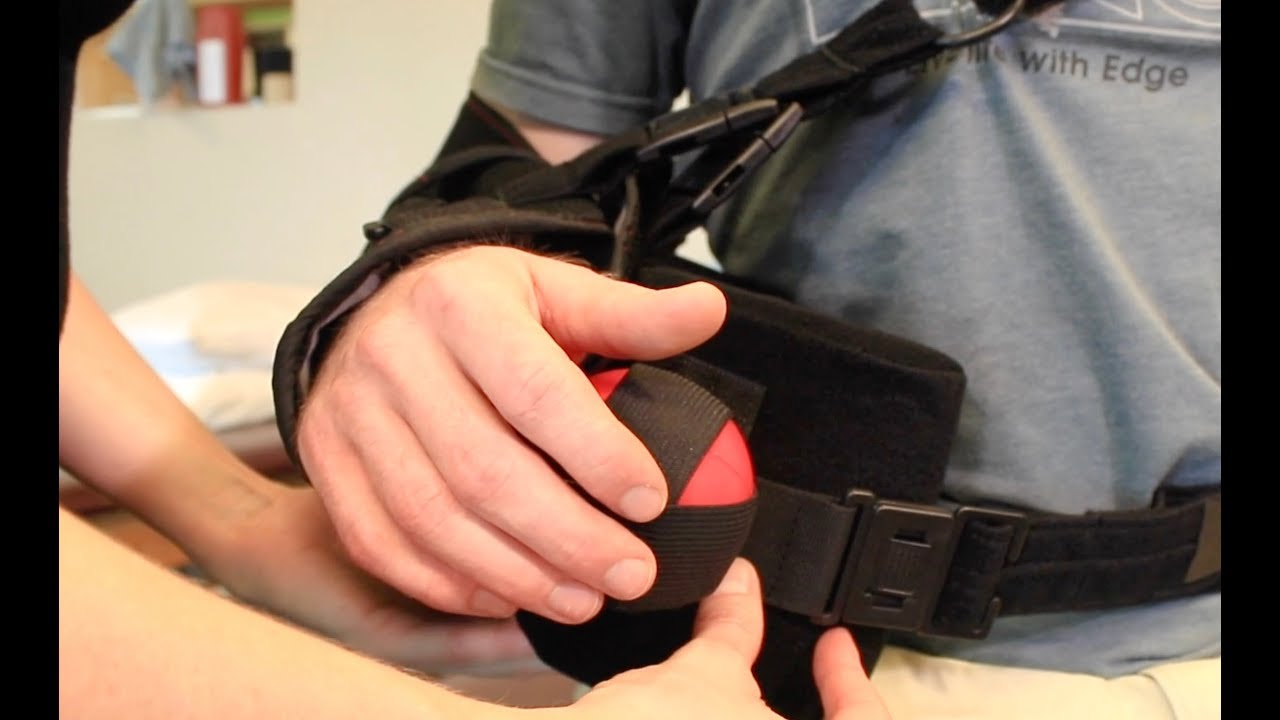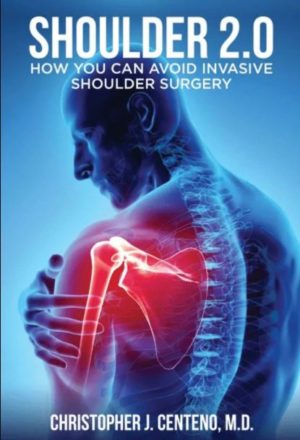It happened as you were playing racketball. There was loud pop followed by immediate pain. Moving your shoulder is almost impossible. What is the rotator cuff? What causes rotator cuff tears? What is rotator cuff surgery? When not to have rotator cuff surgery? Let’s dig in.
What Is the Rotator Cuff? (4 Tendons)
The rotator cuff is a group of four muscles and tendons that stabilize the ball and socket shoulder joint (1). The four muscles that compromise the rotator cuff are the:
- Supraspinatus
- Infraspinatus
- Subscapularis
- Teres minor
The rotator cuff is also important in shoulder functions such as reaching outward, reaching overhead, and putting your hand into your back pocket. Tendons attach muscles to bones. Tendons are susceptible to acute inflammation, degeneration, and tears. Rotator cuff tears are common. The prevalence of rotator cuff tendon tears in the general population is 22.1% (2). Who is at risk for a rotator cuff tear?
Patients who use their shoulders extensively or who have impingement, diabetes, elevated cholesterol, elevated blood pressure, and smoke are a risk for rotator cuff tears (3).
What Causes Rotator Cuff Tears? (Aging, Trauma & Overuse)
Aging
As we grow older there is a tendency for the rotator cuff tendons to become more fragile and susceptible to injury. Just as your skin wrinkles and your hair turns gray, the likelihood of having a rotator cuff tear increases as you grow older. Why does this occur? As we age the number of stem cells in the tendon declines (4). The lower the stem cell count the more susceptible the tendon is to injury including tears.
Trauma
Sports, motor vehicle accidents, and other forms of trauma can cause rotator cuff tears.
Overuse
Weight lifters and other athletes and workers who used their shoulders extensively are at risk for tears.
Are There Different Types of Tears?
Tears in the rotator cuff are not all the same. In fact, there are three principal types of tears that you should know about.
Partial Thickness Tear
This is illustrated in the second image above. This is where a portion of the tendon has been torn. It can be located near the top which is called bursal-sided tear. It can also be located near the bottom of the tendon which is called an articular sided tear. Finally, it may be directly on the inside of the tendon in which case it is called interstitial or intrasubstance tear. the type and location of the tear is important as is typically described in detail in the MRI formal report.
Complete Non-retracted Tear
This is illustrated in the third image above. This is where tear extends across the entire tendon but the tendon is still held together by small remaining fibers.
Complete Retracted Tear
This is illustrated in the fourth image and is the worst-case scenario. This is where the tear extends across the entire tendon and rips apart like a rubber band. It results in two ends of the tendon that are pulled apart. It is commonly referred to as a ” massive rotator cuff tear”.
What Is Rotator Cuff Surgery? (Cutting and Re-Attaching)
Rotator cuff surgery most often involves cutting your injured rotator cuff and then re-attaching the severed tendon to the upper arm bone (humerus). This involves an anchor that is drilled into the bone. The anchor attaches the tendon to the bone. The procedure can be done through a large incision (open) or a shoulder arthroscopy which uses a small camera that allows visualization of the joint and rotator cuff tendons. Shoulder arthroscopy is the most common surgical technique. From 1996 to 2006, the number of shoulder arthroscopies increased by 600%, including an overall 115% increase in the number of rotator cuff repairs (5).
During surgery, nothing is done to address the reduced number of stem cells in the tendon. The reduced number of repair cells makes the tendon more fragile and at risk for injury and tearing.
When Not to Have Rotator Cuff Surgery
If you have a partial thickness or complete non-retracted rotator cuff tear surgery is NOT your best option. Research has shown that surgery for a partial tear produces no better outcomes than just physical therapy (6). Failure after surgery is common. Approximately 6 out of 10 patients who undergo surgical repair of their torn rotator cuff end up re-tearing the tendon.
Multiple medical studies exist that demonstrate PRP is effective in the treatment of partial-thickness tears (7-19). Stem cell injections are also effective. Earlier this year we published the mid-term analysis of a multi-year shoulder rotator cuff randomized controlled trial at the Centeno-Schultz Clinic. The paper demonstrated that the precise injection of high-dose bone marrow concentrate into the damaged rotator cuff tendon using ultrasound guidance helped many patients recover without the need for surgery (10). Others have published similar results using bone marrow-derived stem cells to treat partial-thickness tears.
The procedures are challenging and require extensive training and competency in the use of ultrasound. These are procedures that your family physician and orthopedic surgeon can not perform. To watch one of my shoulder stem cell injections please click on the video below.
In Conclusion
The rotator cuff is a group of four muscles and tendons that stabilize the ball and socket shoulder joint. Aging, trauma, and overuse are common causes of rotator cuff tears. A reduced number of stem cells within the rotator cuff tendon makes it susceptible to injury. There are three different types of rotator cuff tears: partial thickness, full-thickness no-retracted and complete retracted tears. Surgery most often involves cutting the rotator cuff tendon and then reattaching it to the upper arm bone. If you have a partial-thickness or full-thickness tear that is not retracted surgery is not your best option. PRP and stem cells are both effective treatment options that allow patients to forgo the complications and risks associated with surgery.
If you have a rotator cuff tear and are interested in treatment options that do not include dependence on medication or surgeries with high failure rates the good news is that you have options. At the Centeno-Schultz Clinic, we are national experts on the treatment of rotator cuff tears. Both PRP and stem cells are effective in treating rotator cuff injuries. Call us to schedule a telemedicine consult to see if you are a candidate. Act now before the tear, pain, and limitation gets worse.
References
1.Huri G, Kaymakoglu M, Garbis N. Rotator cable and rotator interval: anatomy, biomechanics and clinical importance. EFORT Open Rev. 2019;4(2):56–62. Published 2019 Feb 20. doi:10.1302/2058-5241.4.170071.
2.Minagawa H, Yamamoto N, Abe H, et al. Prevalence of symptomatic and asymptomatic rotator cuff tears in the general population: From mass-screening in one village. J Orthop. 2013;10(1):8-12. Published 2013 Feb 26. doi:10.1016/j.jor.2013.01.008
3. Abate M, Di Carlo L, Salini V, Schiavone C. Risk factors associated to bilateral rotator cuff tears. Orthop Traumatol Surg Res. 2017 Oct;103(6):841-845. doi: 10.1016/j.otsr.2017.03.027. Epub 2017 May 31. PMID: 28578100.
4. Hernigou P, Merouse G, Duffiet P, Chevalier N, Rouard H. Reduced levels of mesenchymal stem cells at the tendon-bone interface tuberosity in patients with symptomatic rotator cuff tear. Int Orthop. 2015 Jun;39(6):1219-25. doi: 10.1007/s00264-015-2724-8. Epub 2015 Mar 12. PMID: 25757411.
5. Colvin AC, Egorova N, Harrison AK, Moskowitz A, Flatow EL. National trends in rotator cuff repair. J Bone Joint Surg Am. 2012;94(3):227–233
6. Nazari G, MacDermid JC, Bryant D, Athwal GS. The effectiveness of surgical vs conservative interventions on pain and function in patients with shoulder impingement syndrome. A systematic review and meta-analysis. PLoS One. 2019;14(5):e0216961. Published 2019 May 29. doi:10.1371/journal.pone.0216961
7. Ilhanli I, Guder N, Gul M. Platelet-Rich Plasma Treatment With Physical Therapy in Chronic Partial Supraspinatus Tears. Iran Red Crescent Med J. 2015;17(9):e23732. Published 2015 Sep 28. doi: 10.5812/ircmj.23732.
8. Cai YU, Sun Z, Liao B, Song Z, Xiao T, Zhu P. Sodium Hyaluronate and Platelet-Rich Plasma for Partial-Thickness Rotator Cuff Tears. Med Sci Sports Exerc. 2019;51(2):227–233. doi: 10.1249/MSS.0000000000001781.
9. Rha DW, Park GY, Kim YK, Kim MT, Lee SC. Comparison of the therapeutic effects of ultrasound-guided platelet-rich plasma injection and dry needling in rotator cuff disease: a randomized controlled trial. Clin Rehabil. 2013 Feb;27(2):113-22. doi: 10.1177/0269215512448388.
10. Centeno C, Fausel Z, Stemper I, Azuike U, Dodson E. A Randomized Controlled Trial of the Treatment of Rotator Cuff Tears with Bone Marrow Concentrate and Platelet Products Compared to Exercise Therapy: A Midterm Analysis. Stem Cells Int. 2020 Jan 30;2020:5962354. doi: 10.1155/2020/5962354. PMID: 32399045; PMCID: PMC7204132.


